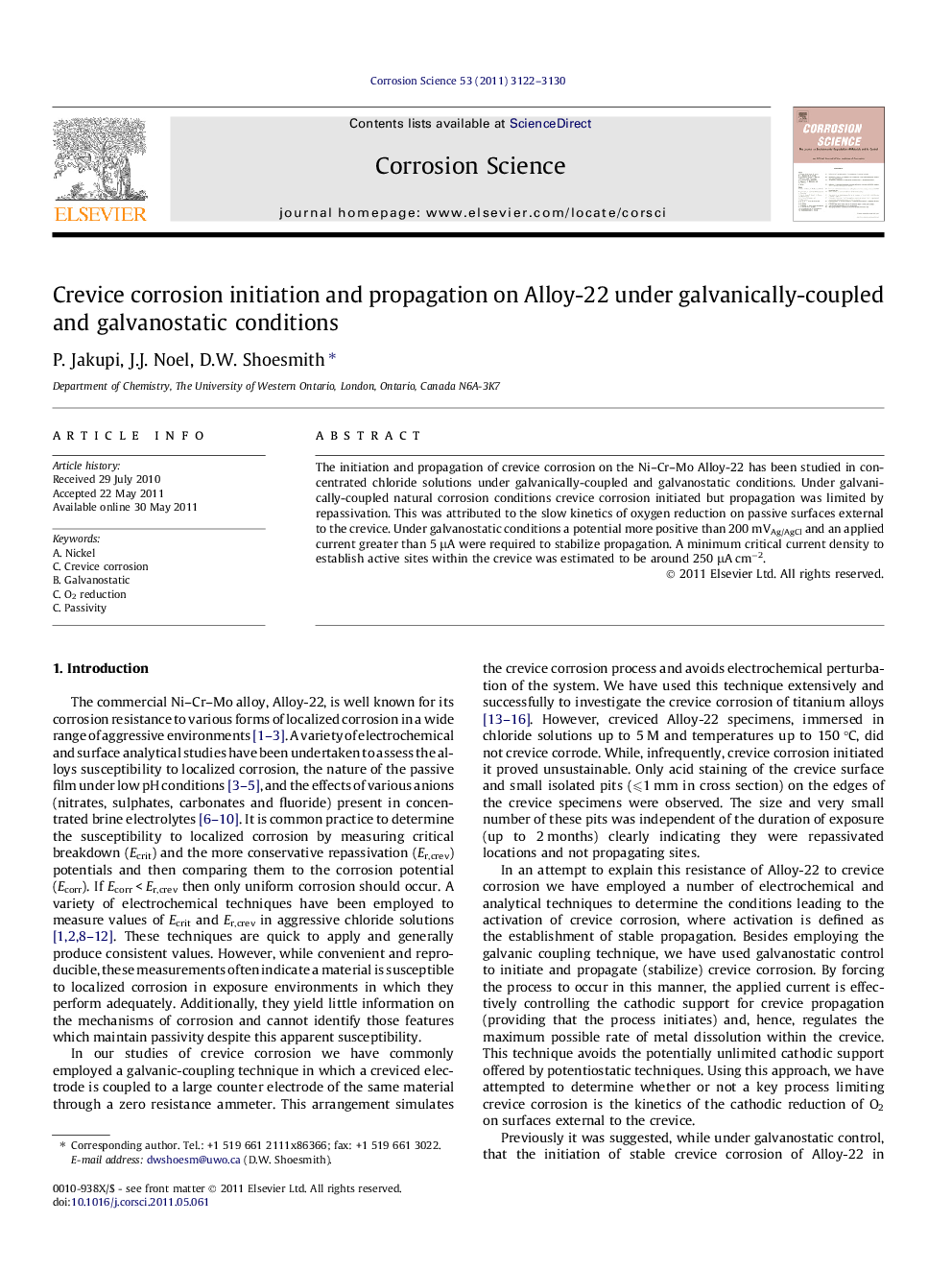| Article ID | Journal | Published Year | Pages | File Type |
|---|---|---|---|---|
| 1469708 | Corrosion Science | 2011 | 9 Pages |
The initiation and propagation of crevice corrosion on the Ni–Cr–Mo Alloy-22 has been studied in concentrated chloride solutions under galvanically-coupled and galvanostatic conditions. Under galvanically-coupled natural corrosion conditions crevice corrosion initiated but propagation was limited by repassivation. This was attributed to the slow kinetics of oxygen reduction on passive surfaces external to the crevice. Under galvanostatic conditions a potential more positive than 200 mVAg/AgCl and an applied current greater than 5 μA were required to stabilize propagation. A minimum critical current density to establish active sites within the crevice was estimated to be around 250 μA cm−2.
► Creviced Alloy 22 was studied under galvanically-coupled and galvanostatic conditions. ► Crevice corrosion initiated, but propagation was limited by rapid repassivation. ► Kinetics of O2 reduction are too slow to sustain active crevice conditions.
